Hovenweep Epilogue
May 14 - Hovenweep National Monument - #43-2024
DISCOVERIESNATURE
AL
5/22/2024
We bid our friends farewell as they continued on their travels West and headed back for camp. We had seen signs for more ruins within Hovenweep National Monument while driving to the main complex. We had not visited them before and, as it was late in the day, debated for a moment if we should stop. We were already here, and decided to seize the opportunity to see what they offered. We are so glad that we detoured!
Hovenweep means "deserted valley" in the Ute language, and it may appear that way to the eyes, but the place has a special feeling. I hesitate to write about places like this that are still naturally pure, appreciably absent of graffiti, defacing, or overrun with crowds. I've been to numerous National Parks & Monuments. I can appreciate this place for a combination of reasons: the unique structures with their thoughtful architecture and robust engineering, how they cling to the edges of the canyons or atop boulders, the serenity of the natural setting, how the hikes are relatively easy, no feeling of cattle being run through a chute, no people standing around or ruining photo opportunities, and an age old spirituality surrounding it.
Hovenweep consists of six groups or areas: Square Tower, Holly, Horseshoe, Hackberry, Cutthroat, Cajon, and Goodman Point. In 1889, Goodman Point Village was the first archaeological site in the United State to have Federal protection, long before 1923 when the entire area was designated a National Monument.
Back in 2019, we had explored the Square Tower Group, which we shared in the last post, as part of a whirlwind of Ancient Ruins. On that particular day, we started out at a hotel in Cottonwood, Arizona, and ended the day at another in Cortez, Colorado. In between, we visited all of the following National Monuments: Tuzigoot, Montezuma Castle and Well, Walnut Canyon, Navajo, Hovenweep, and Lowry Pueblo (which is part of Canyon of the Ancients). This was all within one day in December, when daylight is already short. It was eight hours of driving alone and almost 500 miles!
Understandably, our friends are currently speed-traveling like we did back then. While that was thrilling, we are very fortunate that we can now take a little more time without feeling like we have to rush to the next attraction, or to enable last-minute sidetracks to the unknowns between.
This tour of Hovenweep, we ventured down the dirt and gravel sideroads to visit the ruins of four separate Ancient Puebloan Villages. Each one sits atop the edge of a canyon, with homes, tower, and kivas. They are in various states of ruin: some buildings just piles of rubble, while others have almost complete walls, yet the timbers that held up the floors and roofs are almost gone.
First up was Holly, which has a tower that appears to grow out of a boulder out in the middle of the canyon as well as ruins and buildings. We followed a trail along the edge of a canyon to a petroglyph overlook. Maybe it was the late afternoon sun, or we were looking in the wrong direction, but we did not see it. My further research found that just after sunrise on the Summer Solstice, the sun shone through the crack between the boulders, illuminating the petroglyphs. While I do have time, June 20th is simply too long to wait, not to mention we could not find them.
Horseshoe and Hackberry are close to each other on neighboring canyons. A horseshoe shaped tower and house are the main features that remain, giving the village its name. There is a round kiva tucked under the alcove in which the house was built. Hackberry is mostly rubble now but research shows that back when this culture was thriving, it was the largest village within the Monument.
The last place we stopped in Hovenweep was Cutthroat Castle Ruins. We drove the ol' Liberty down a rough and bumpy "High-Clearance 4x4 Trail" to save time, as well as wear on our legs and feet. The castle and tower were in pretty good shape, and there was a room built in the alcove beneath. Tom spotted an apparatus on a crack in the lower room's supporting rock. We think it monitors the crack's growth. At another ruin, I was started by a large mouse or small rat when I peered over the tower wall. She appeared to be making her home in the holes left from the missing timbers. I wish I had gotten her picture, but she was quick to escape our presence.
We ended the day at the Painted Hand Pueblo in the Canyon of the Ancients National Monument. We never found the painted hands, although we hiked down the non-maintained trail to see the ruins from below. Oddly, I just noticed the hands in my photo, as you will soon see. The supporting stone beneath this structure is crumbling. I hope they can remediate it so that it does not collapse. The hike down was much farther than expected, making the climb back to the parking lot more difficult, considering all of the days earlier treks.
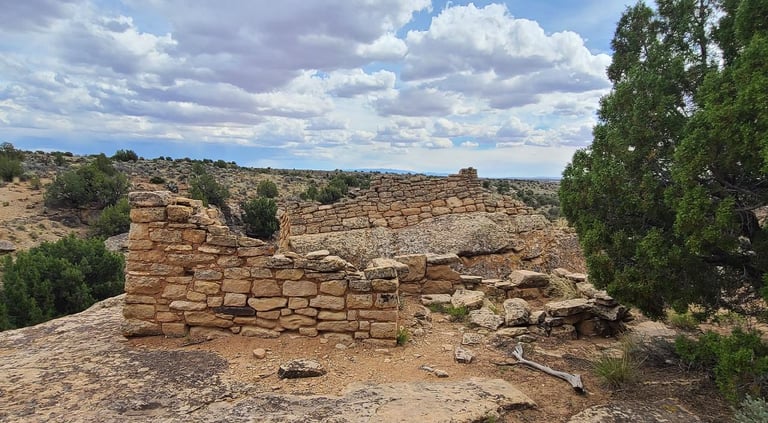

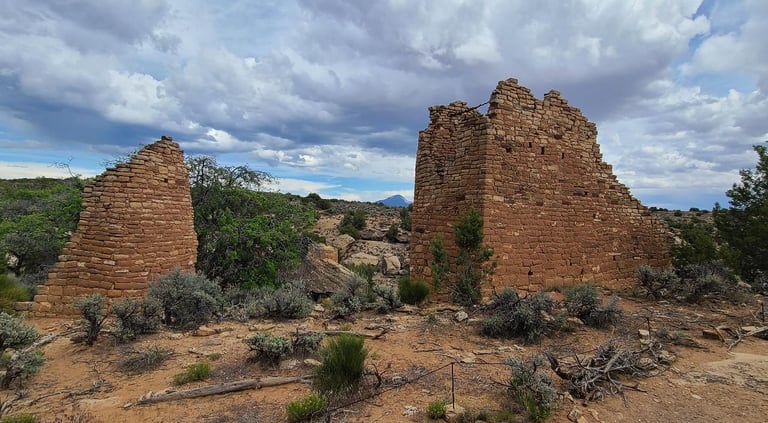

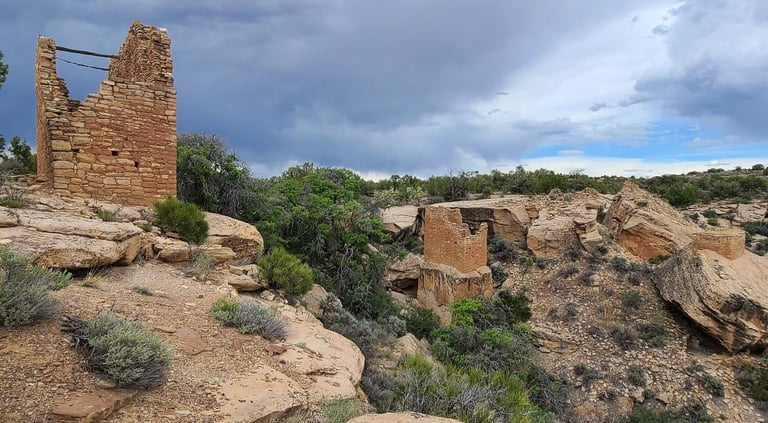

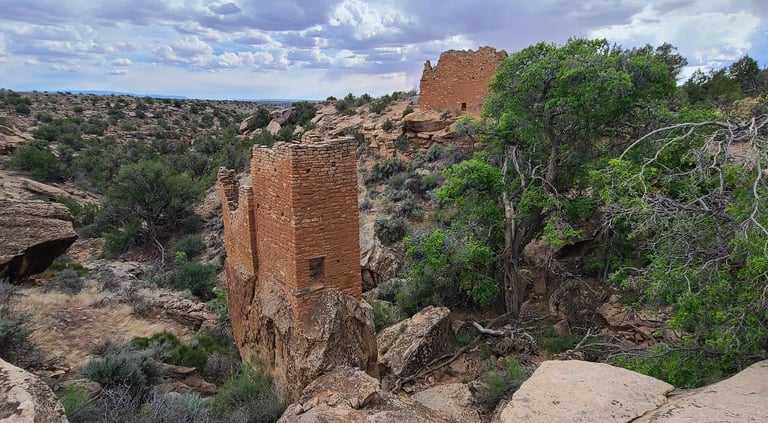

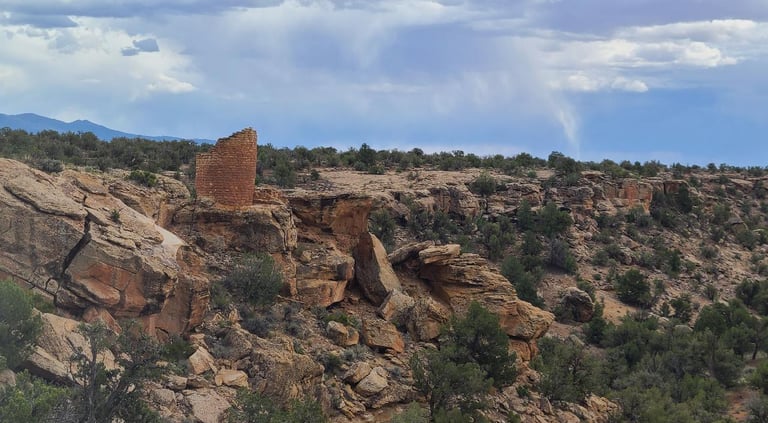

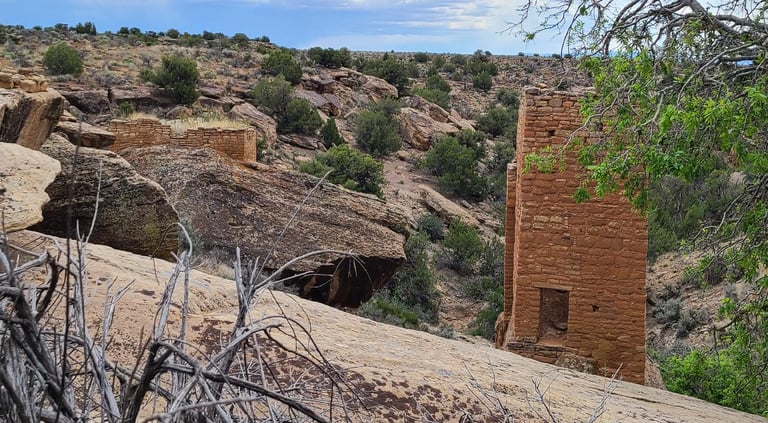

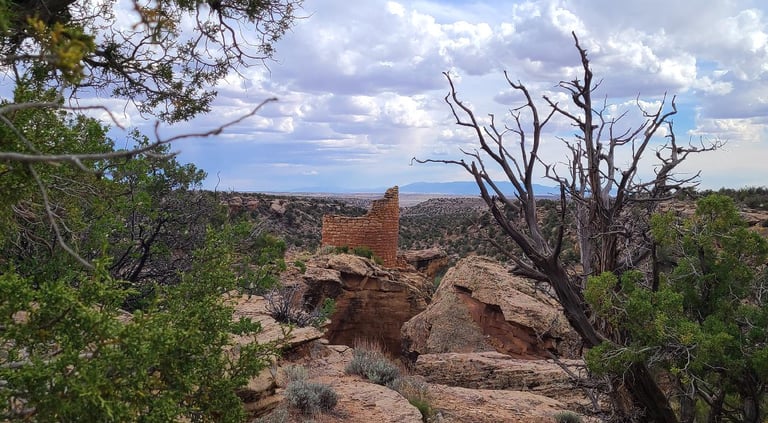

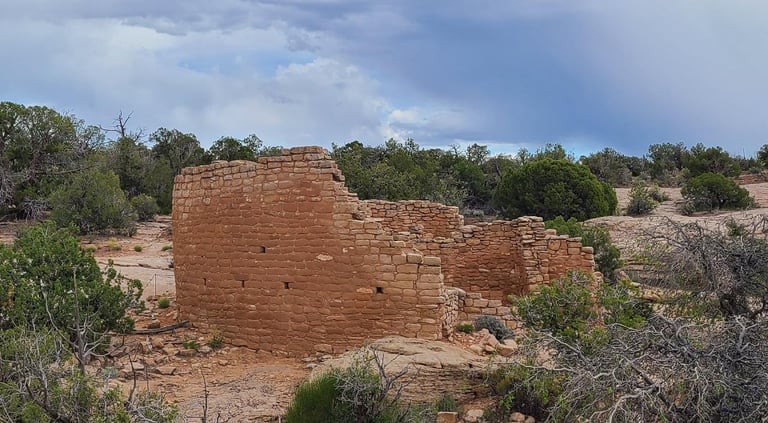

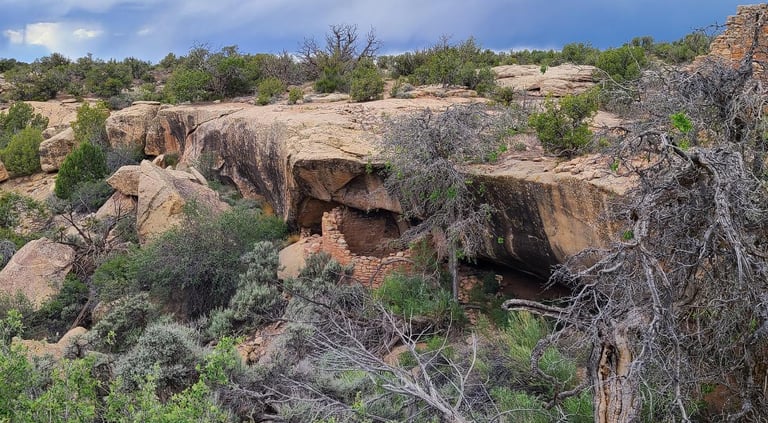

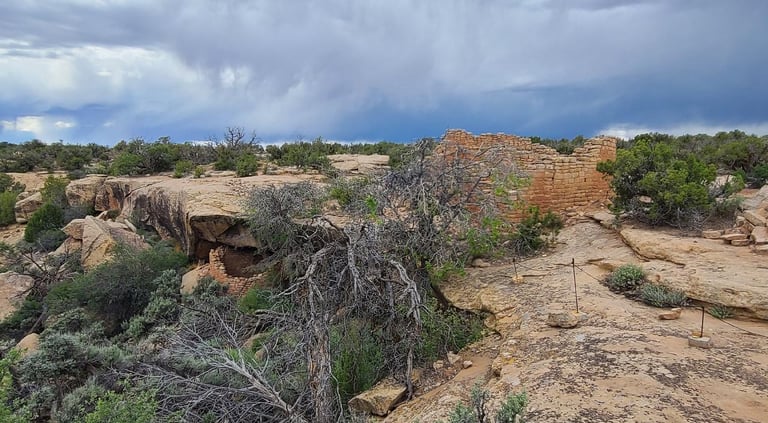

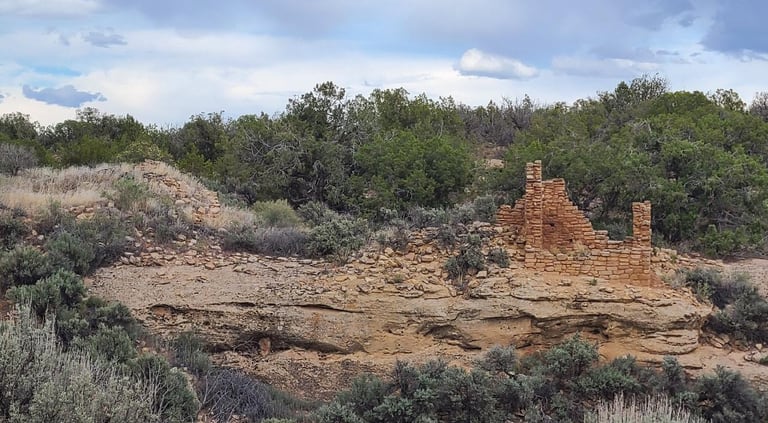

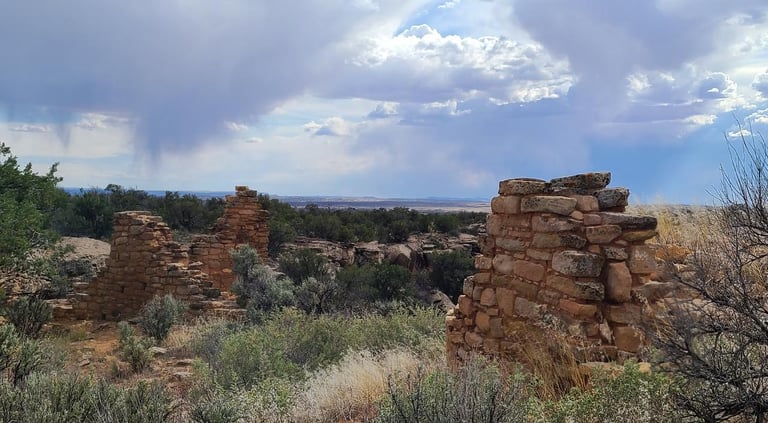

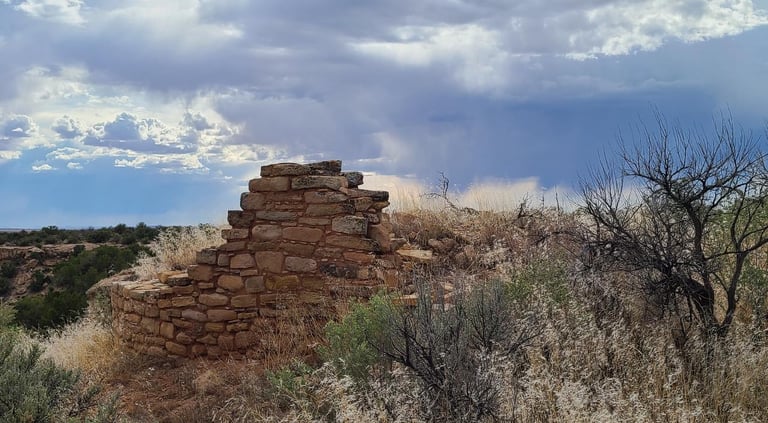

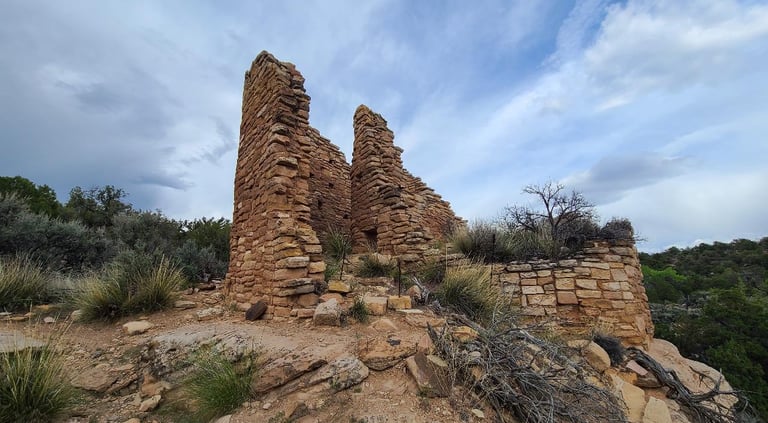

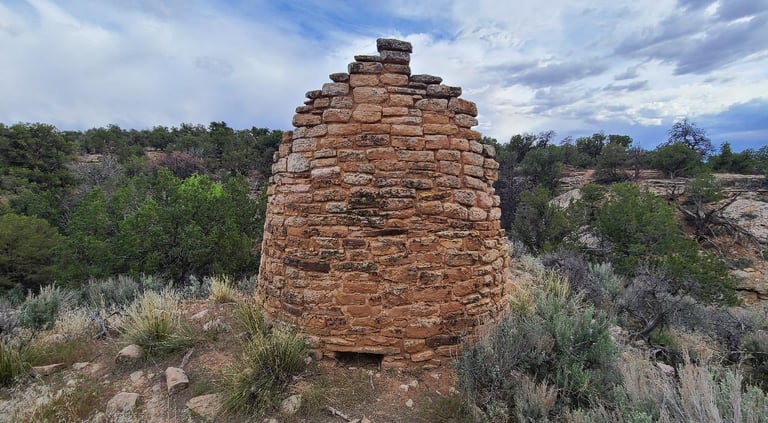

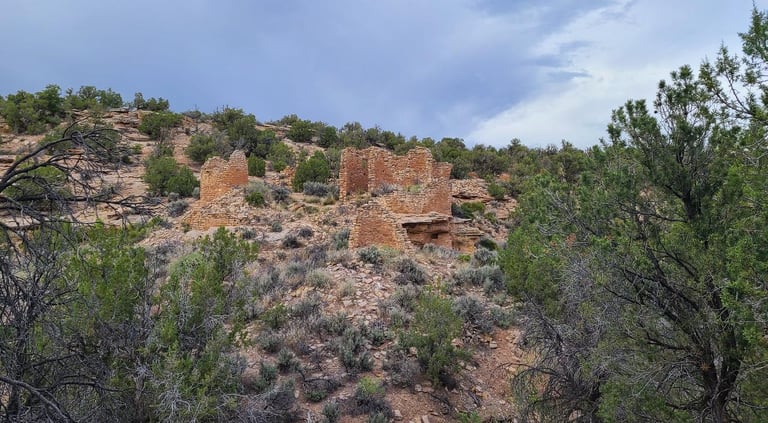

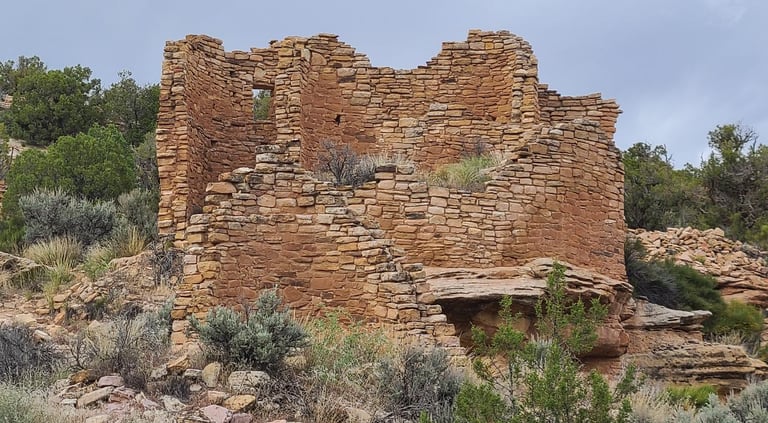

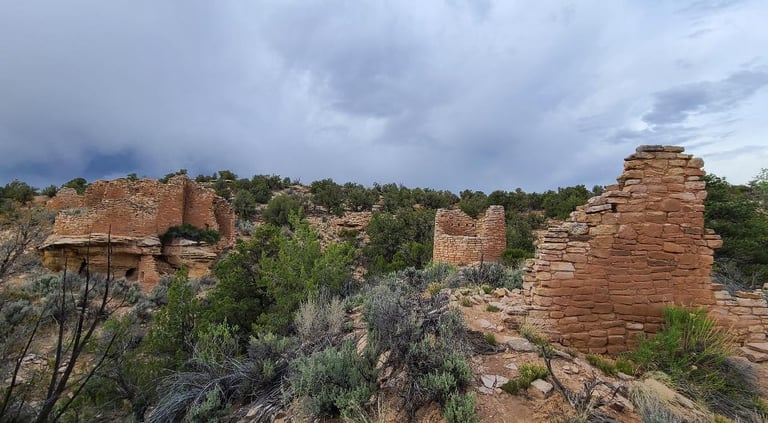

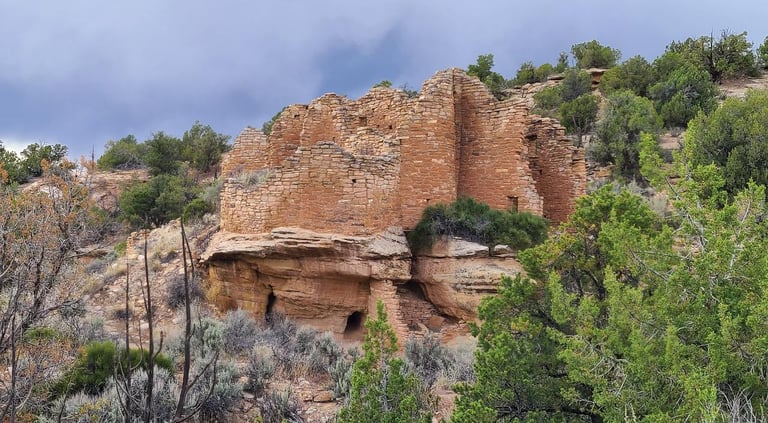

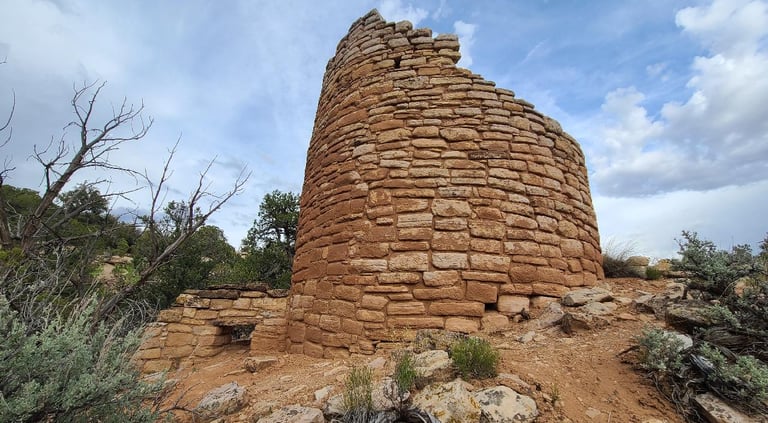

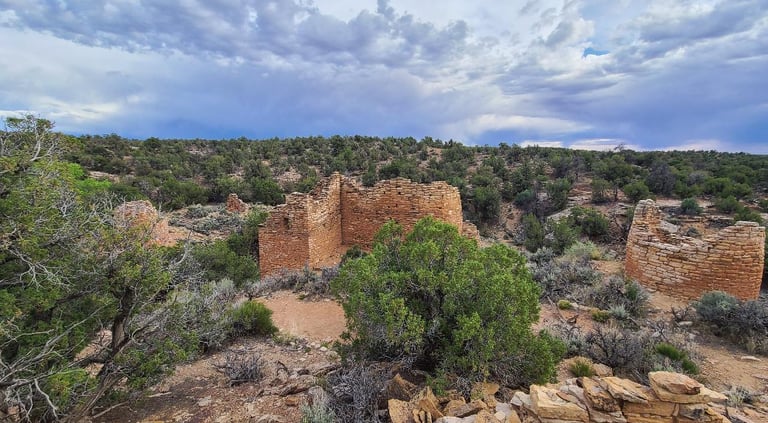

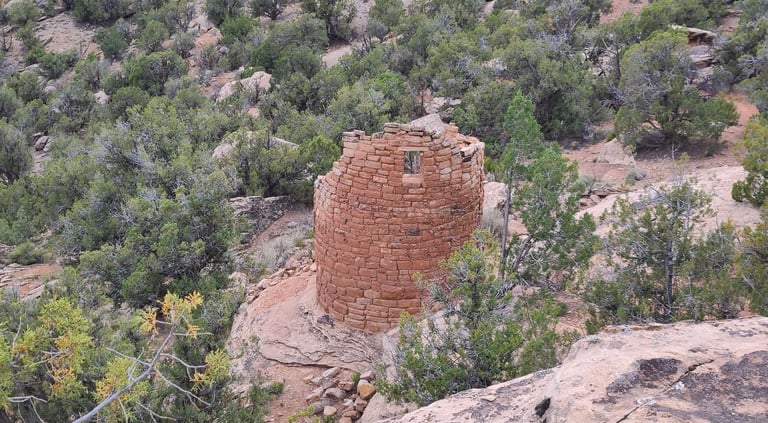

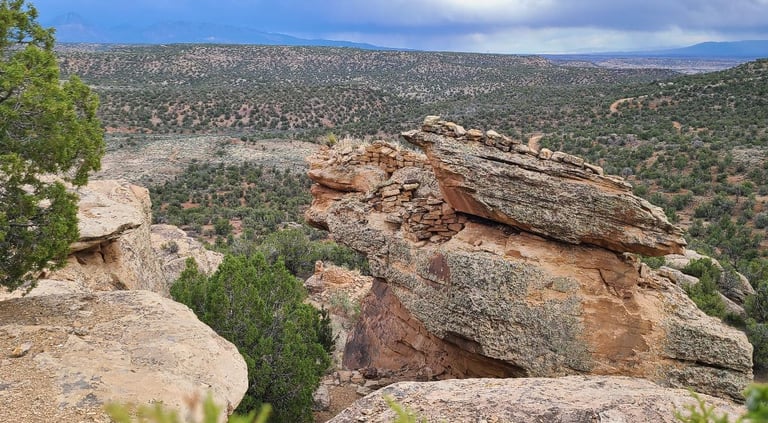

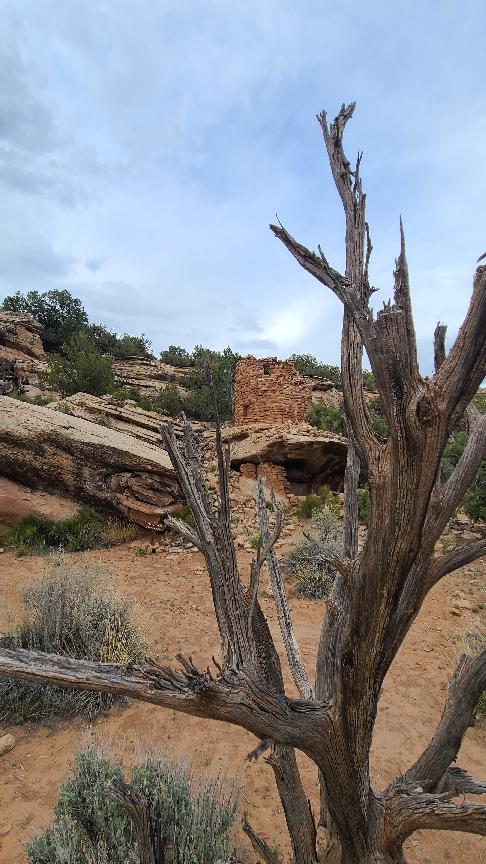

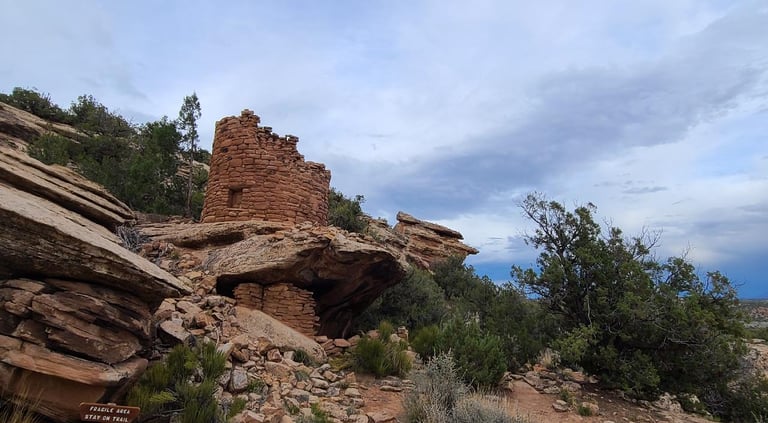

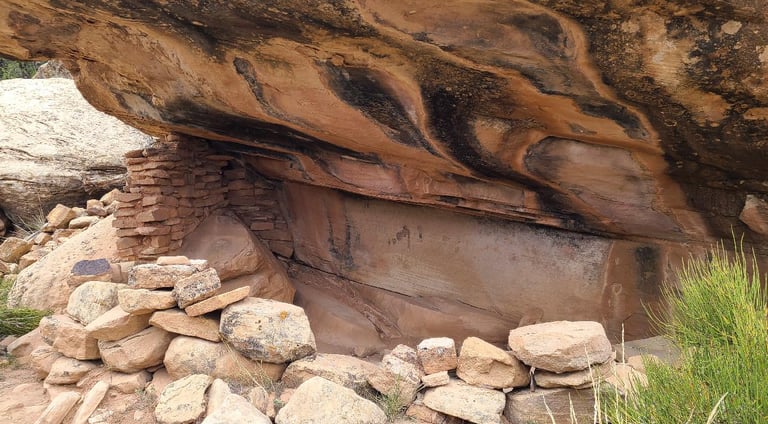

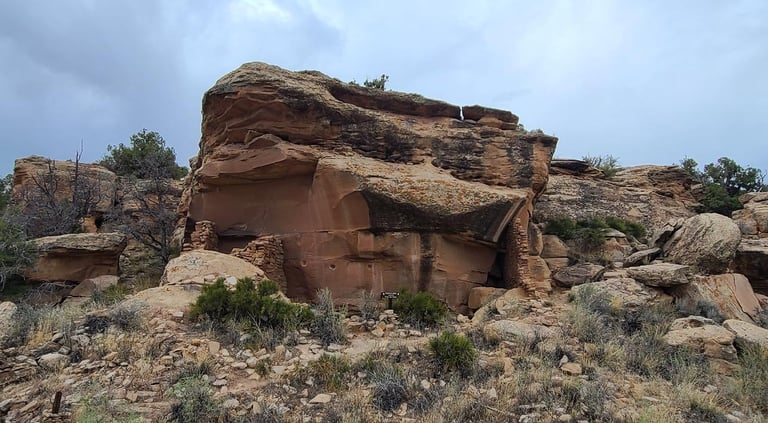

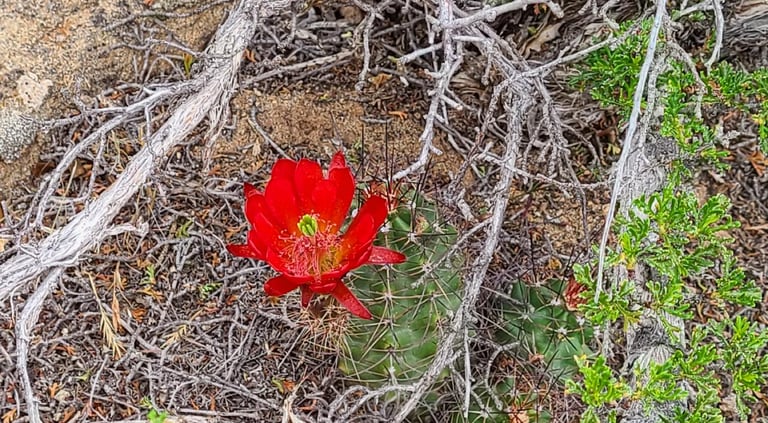

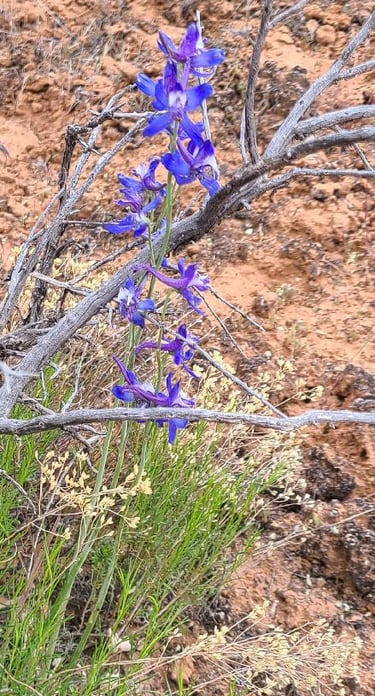

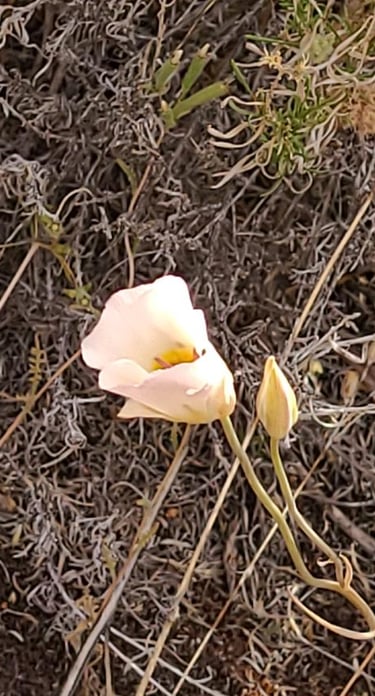

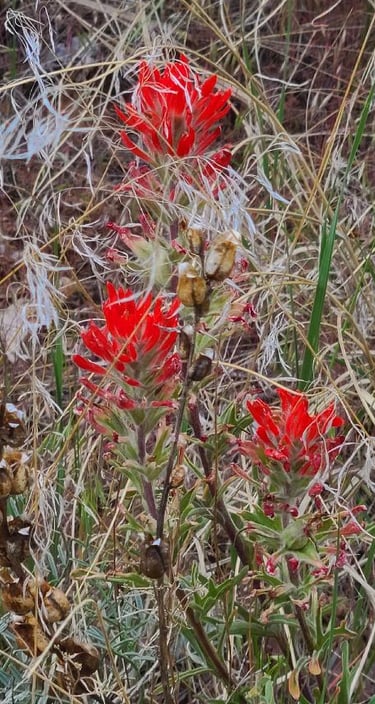

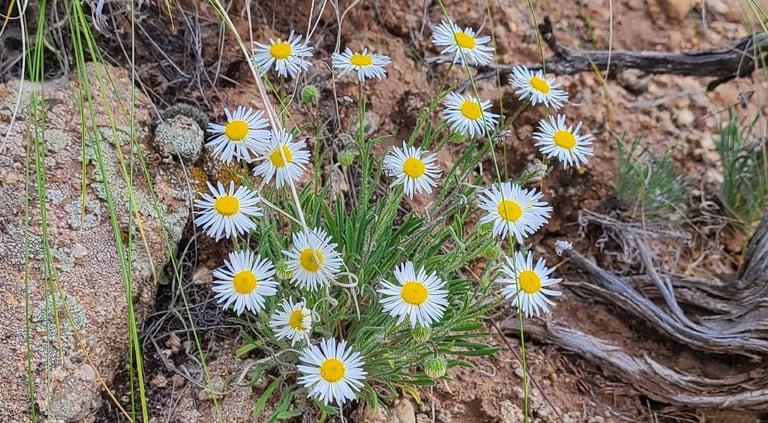

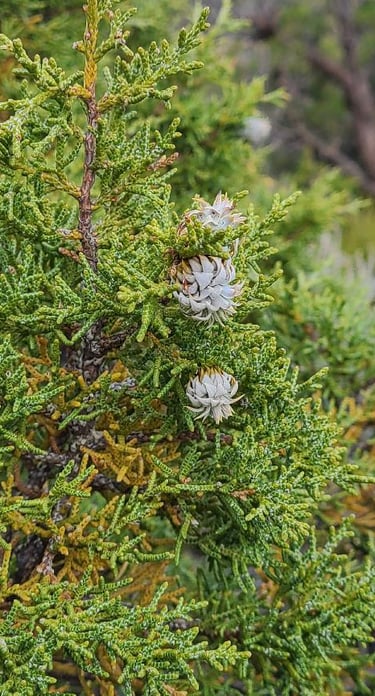

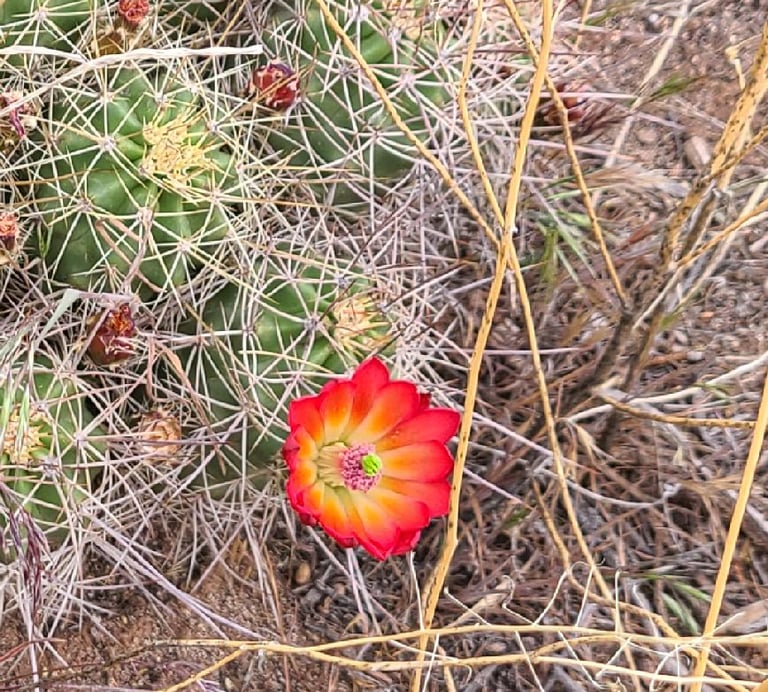

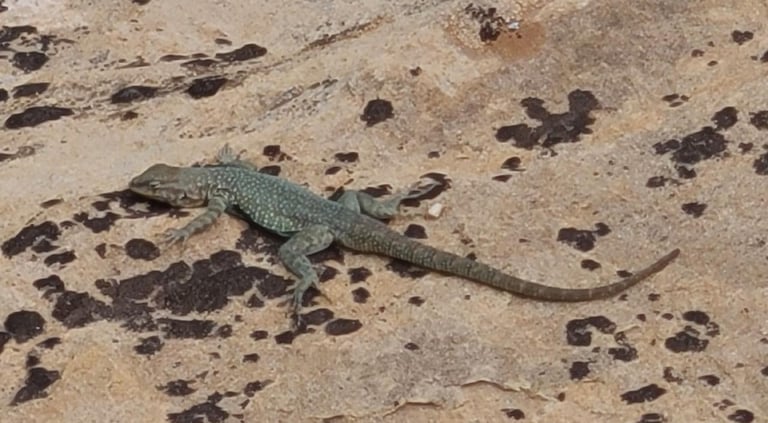

Share your comments on Facebook or email us at roadfronts@gmail.com
At all of these locations, there are thin chains surrounding each ruin instructing visitors to observe from behind the closed area. It was heartening to see that people have been respecting them... at least we couldn't see any indication of trampled ground past any of the chains.
It was a full and exciting day, but darkness was approaching, and we were spent after the last hike. The other places will have to wait for another time. There are two more groups of ruins that we have not visited: Cajon, the farthest West, and Goodman Point, the farthest East. Hopefully, our travels will bring us back so that we can explore them too. This is one place that planning a third visit is highly anticipated!
Subscribe for monthly updates
Current location:
